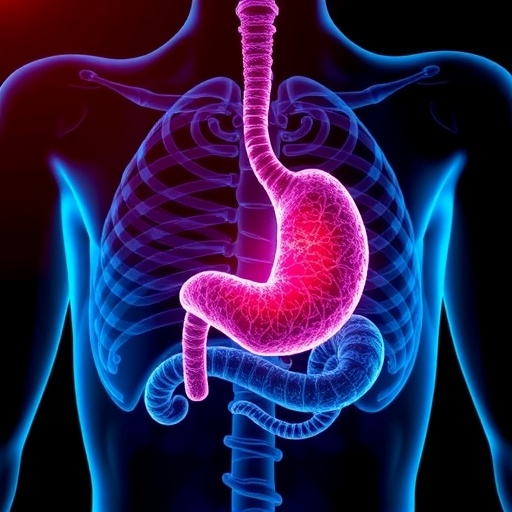In an era where cancer research continuously seeks novel avenues for therapeutic intervention, an emerging study published in Food Science and Biotechnology offers promising insights into the potential of naturally derived compounds in battling gastric cancer. A research team led by Zhou, Kim, and Zhan has unveiled groundbreaking evidence demonstrating that solasodine, a steroidal alkaloid commonly extracted from plants in the Solanaceae family, effectively inhibits the proliferation of gastric cancer cells. The study’s mechanistic focus reveals that solasodine exerts its antitumor effects through the targeted suppression of the Hedgehog/Gli1 signaling pathway, a crucial molecular cascade often implicated in cancer cell growth and survival.
Gastric cancer remains one of the leading causes of cancer-related mortality worldwide, with prognosis frequently hampered by late-stage diagnosis and resistance to conventional therapies. The molecular complexity underlying this malignancy has spurred researchers to explore non-traditional compounds that might interfere with key oncogenic pathways. In this context, the Hedgehog signaling pathway, particularly the Gli1 transcription factor, plays a pivotal role in regulating cellular differentiation, proliferation, and apoptosis, making it an attractive target for therapeutic intervention. The novel findings by Zhou and colleagues pinpoint solasodine as a potent inhibitor of this pathway, thereby effectively stalling the aggressive progression of gastric cancer cells in vitro.
Delving deeper into the molecular mechanisms, the study elaborates on how solasodine disrupts the Hedgehog pathway’s downstream effectors. Gli1, being a transcription factor, modulates the expression of genes associated with cell cycle progression and survival. By suppressing Gli1 activity, solasodine causes a cascade of genetic alterations that culminate in the arrest of the cell cycle and the induction of apoptosis—programmed cell death—in gastric cancer cells. This dual action not only halts tumor growth but also promotes the death of malignant cells, providing a two-pronged approach to cancer treatment that is both efficient and targeted.
What makes solasodine particularly compelling as a therapeutic candidate is its natural origin coupled with its multifaceted biological activities. Previous studies have documented solasodine’s anti-inflammatory, antimicrobial, and antitumor effects across various cancer types, yet its specific influence on gastric cancer and Hedgehog signaling remained unexplored until now. This research fills a critical gap by demonstrating that solasodine’s inhibitory effect extends to the molecular level, precisely impeding the Gli1 transcription factor—a central node in gastric tumor biology.
The implications of these findings are far-reaching, especially considering the limitations of current gastric cancer treatments that often involve surgery, chemotherapy, and radiation therapy, which come with significant adverse effects. Solasodine’s capacity to selectively target cancerous cells without exerting widespread toxicity hints at a more refined therapeutic strategy that could complement or even substitute existing regimens, minimizing collateral damage to healthy tissues.
Moreover, the Hedgehog pathway is notorious for its involvement in cancer stem cell maintenance, tumor invasiveness, and metastasis. By downregulating Gli1, solasodine may offer a strategy not just for halting primary tumor growth but also for preventing cancer recurrence and dissemination. This addresses a critical challenge in oncology, where metastatic disease significantly diminishes patient survival and quality of life.
The researchers employed a comprehensive suite of cellular assays and molecular techniques to validate the inhibitory role of solasodine. Their methodologies included cell viability assays to quantify proliferation rates, flow cytometry to analyze apoptosis and cell cycle dynamics, and Western blotting to measure protein expression levels pertinent to Hedgehog signaling. Such robust experimental design fortifies the study’s conclusions, underscoring the reproducibility and reliability of solasodine’s antineoplastic effects.
Interestingly, the study also notes the dose-dependent relationship between solasodine concentration and its biological effects. Higher doses resulted in more pronounced suppression of Gli1 and a corresponding increase in apoptotic cell populations. This dose responsiveness is crucial for future therapeutic considerations, laying the groundwork for optimized dosing regimens that balance efficacy with safety.
While the current study’s in vitro nature calls for further validation in animal models and clinical trials, the translational potential is unmistakable. If corroborated in vivo, solasodine could emerge as a prototype for phytochemical-based cancer therapeutics, championing a paradigm shift towards natural product-derived anticancer agents that target oncogenic signaling pathways with precision.
What also sets this research apart is its contribution to the broader field of signal transduction in oncology. Targeting transcription factors like Gli1 has historically posed challenges due to their intracellular location and flexible structures. The identification of solasodine as a Gli1 suppressor opens new vistas for drug development focused on transcription factor modulation, an area that remains underexploited despite its therapeutic promise.
Furthermore, the study highlights the interplay between traditional medicinal chemistry and modern molecular oncology, bridging centuries-old botanical knowledge with cutting-edge biomedical research. This integration paves the way for a renaissance in drug discovery, emphasizing the molecular refinement of natural compounds to address complex diseases such as cancer.
Looking ahead, the team suggests potential combinatorial approaches, where solasodine could be administered alongside other chemotherapeutic agents or targeted therapies to enhance anticancer efficacy. Such synergy could amplify tumor suppression while mitigating drug resistance—a persistent hurdle in the management of gastric cancer.
In conclusion, the findings by Zhou, Kim, Zhan, and colleagues inject fresh optimism into gastric cancer therapeutics, shedding light on the molecular underpinnings of solasodine’s action as a Hedgehog/Gli1 pathway inhibitor. Their research not only enriches our understanding of gastric cancer biology but also highlights the untapped potential of plant-derived alkaloids in advancing cancer treatment paradigms. As scientific efforts continue to dissect the complexities of cancer signaling, solasodine stands out as a beacon of hope—a naturally sourced compound with the promise to transform malignancy into manageability.
Subject of Research: Inhibition of gastric cancer cell proliferation via suppression of the Hedgehog/Gli1 signaling pathway by solasodine.
Article Title: Solasodine inhibited the proliferation of gastric cancer cells through suppression of Hedgehog/Gli1 signaling.
Article References:
Zhou, Y., Kim, J.T., Zhan, X. et al. Solasodine inhibited the proliferation of gastric cancer cells through suppression of Hedgehog/Gli1 signaling. Food Sci Biotechnol (2025). https://doi.org/10.1007/s10068-025-01946-4
Image Credits: AI Generated




